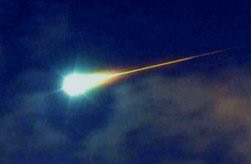




Looking After Your Finds - Reference

Identifying Minerals
Powered By Sispro1

[1-3]
Identifying Minerals
Pages 1-3
Rocks
Identifying rocks is less critical in some ways than identifying minerals. A dense, gray mineral is either galena or it isn't. On the other hand, sandstone can grade into siltstone, limestone into dolostone, gabbro into diorite. If a rock is on the borderline between two types, it's usually not all that critical where you place it.
The Three Great Rock Families
Suspect a rock is of a given type if it has one or more of these characteristics:
Sedimentary
Has obvious stratification
Very soft (easily scratched by a knife)
Obviously made of particles cemented together
Contains fossils
Igneous-Volcanic
Contains numerous bubble-like cavities that may or may not be lined with minerals
Has obvious bubbly or frothy texture
Is fine-grained, uniform in texture, and hard
Glassy or highly vesicular rocks are almost always igneous
Igneous-Plutonic
Made of discrete mineral grains locked together (may be loosened by weathering)
Contains large crystals in a finer-grained mass
Rock mass obviously cuts across other rock structures.
Metamorphic
Has a fine texture with an obvious directional grain (foliation)
Has obvious bands, streaks or clumps of different minerals
Is made mostly of quartz or calcite but is coarse-grained and lacks sedimentary features
Contains distinctive metamorphic minerals like garnet or kyanite
May often have features of original rock but is recrystallized or chemically changed.
Sedimentary Rocks
Obvious Fragments Visible
Borderline of visibility: siltstone
Sand-sized: sandstone (did you really need me to tell you that?)
o Abundant feldspar: arkose
o Rock fragments and mafic silicates: graywacke
Pebbles: conglomerate
Angular pebbles: breccia
No Fragments Visible
Soft and fizzes vigorously in acid: limestone
Soft, often buff color, fizzes slowly in acid: dolostone
Very soft, light color, may be granular with obvious cleavage visible: gypsum or rock salt.
(Confirm salt with taste test. Consider other evaporites like borates in arid areas).
Mudrocks are opaque, usually very soft, but may be quite hard if well-cemented. They may fizz if they have significant carbonate minerals.
o Vigorous fizzing in acid: marl
o Obvious sheet-like or flaky bedding: shale
o Massive but made largely of clay: argillite
o Gritty texture to feel or when bitten (seriously!), but particles borderline in visibility: siltstone
Sedimentary-Volcanic
These are rocks created by volcanic action but deposited by mechanisms similar to sedimentary rocks. Some people classify them as volcanic, others as sedimentary.
Unconsolidated powder with occasional larger fragments: ash
Small rock pellets: lapilli
Large fragments, hand-sized and up: bombs
Consolidated ash or lapilli: tuff
Large broken fragments in finer material; may be ejecta blocks, mudflow, or due to explosion: volcanic breccia. Mudflow deposits are often called lahars.
Igneous-Volcanic
Dark, fine-grained massive rock: basalt or andesite. Difficult to tell apart without chemical or microscopic study. Olivine is most likely to indicate basalt.
Fine-grained massive rock, may be any color. Often porcelain-like in texture and may have quartz or feldspar visible: rhyolite.
Glassy: obsidian. If it is the cooling crust of a lava flow call it by the volcanic rock name, for example, basaltic glass.
Frothy, but still sinks readily: scoria
Frothy: floats or is only a bit heavier than water: pumice
Igneous-Plutonic
Contains quartz and potassium feldspar: granite
o Extremely large crystals: pegmatite
o Fine, sugary dike or sill rock: aplite
o Plagioclase more abundant than potassium feldspar: granodiorite
Contains abundant potassium feldspar but no quartz: syenite
Dominated by plagioclase feldspar: diorite or gabbro.
Identifying rocks is less critical in some ways than identifying minerals. A dense, gray mineral is either galena or it isn't. On the other hand, sandstone can grade into siltstone, limestone into dolostone, gabbro into diorite. If a rock is on the borderline between two types, it's usually not all that critical where you place it.
The Three Great Rock Families
Suspect a rock is of a given type if it has one or more of these characteristics:
Sedimentary
Has obvious stratification
Very soft (easily scratched by a knife)
Obviously made of particles cemented together
Contains fossils
Igneous-Volcanic
Contains numerous bubble-like cavities that may or may not be lined with minerals
Has obvious bubbly or frothy texture
Is fine-grained, uniform in texture, and hard
Glassy or highly vesicular rocks are almost always igneous
Igneous-Plutonic
Made of discrete mineral grains locked together (may be loosened by weathering)
Contains large crystals in a finer-grained mass
Rock mass obviously cuts across other rock structures.
Metamorphic
Has a fine texture with an obvious directional grain (foliation)
Has obvious bands, streaks or clumps of different minerals
Is made mostly of quartz or calcite but is coarse-grained and lacks sedimentary features
Contains distinctive metamorphic minerals like garnet or kyanite
May often have features of original rock but is recrystallized or chemically changed.
Sedimentary Rocks
Obvious Fragments Visible
Borderline of visibility: siltstone
Sand-sized: sandstone (did you really need me to tell you that?)
o Abundant feldspar: arkose
o Rock fragments and mafic silicates: graywacke
Pebbles: conglomerate
Angular pebbles: breccia
No Fragments Visible
Soft and fizzes vigorously in acid: limestone
Soft, often buff color, fizzes slowly in acid: dolostone
Very soft, light color, may be granular with obvious cleavage visible: gypsum or rock salt.
(Confirm salt with taste test. Consider other evaporites like borates in arid areas).
Mudrocks are opaque, usually very soft, but may be quite hard if well-cemented. They may fizz if they have significant carbonate minerals.
o Vigorous fizzing in acid: marl
o Obvious sheet-like or flaky bedding: shale
o Massive but made largely of clay: argillite
o Gritty texture to feel or when bitten (seriously!), but particles borderline in visibility: siltstone
Sedimentary-Volcanic
These are rocks created by volcanic action but deposited by mechanisms similar to sedimentary rocks. Some people classify them as volcanic, others as sedimentary.
Unconsolidated powder with occasional larger fragments: ash
Small rock pellets: lapilli
Large fragments, hand-sized and up: bombs
Consolidated ash or lapilli: tuff
Large broken fragments in finer material; may be ejecta blocks, mudflow, or due to explosion: volcanic breccia. Mudflow deposits are often called lahars.
Igneous-Volcanic
Dark, fine-grained massive rock: basalt or andesite. Difficult to tell apart without chemical or microscopic study. Olivine is most likely to indicate basalt.
Fine-grained massive rock, may be any color. Often porcelain-like in texture and may have quartz or feldspar visible: rhyolite.
Glassy: obsidian. If it is the cooling crust of a lava flow call it by the volcanic rock name, for example, basaltic glass.
Frothy, but still sinks readily: scoria
Frothy: floats or is only a bit heavier than water: pumice
Igneous-Plutonic
Contains quartz and potassium feldspar: granite
o Extremely large crystals: pegmatite
o Fine, sugary dike or sill rock: aplite
o Plagioclase more abundant than potassium feldspar: granodiorite
Contains abundant potassium feldspar but no quartz: syenite
Dominated by plagioclase feldspar: diorite or gabbro.
Copyright All Rights Reserved by Nigel G Wilcox E-Mail: ngwilcox100@gmail.com
Minerals
Group Pages
Complimentary Topics
Designed by Nigel G Wilcox
The Paragon Of Metal Detecting
& Archaeology
& Archaeology
Pages
Member NCMD
Reference Menu




















